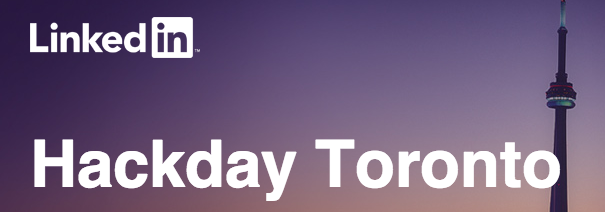
![]() Some rights reserved by mdanys
Some rights reserved by mdanys
Mark Evans has started an interesting conversation around my tweet (part 1 aim for success, part 2 the VCs respond).
I am sick of hearing there is no money for #startups in Canada. BULLSHIT! It might be there is no money for YOUR startup in Canada.
— David Crow (@davidcrow) January 30, 2013
I posted my comments about building a culture of better informed founders and early employees. But then I realized that maybe all of my comments are aimed at misbehaving children. When the real intent should be to correct the parents. That’s right I just called most startups and their founders, misbehaving children. But the culture is broken. It is broken with technologists and designers looking for handouts. It is broken with every Tom, Dick and Sally calling themselves an entrepreneur because they think since they’ve had a “great idea” someone should give them money so they work on it because they are the next Zuckerberg.
This is ass backwards. And it’s part of the problem.
Something for Nothing
You don’t get something for nothing. There is no such thing as a free lunch. There are very few people that might invest in you to work on your dreams. Your parents. Your spouse. If you are lucky, your children. It is the belief that “I should get funded because I’m a good person” or “I went to university” or “I worked for a startup” or “I built a prototype” or “I have a pitch deck”. It is thinking like this that is absurd.
“The reason most founders think there is not enough capital is that they get rejected when they go looking for it. And one of the main reasons they get rejected is that their opportunity does not fit what VCs are looking for” – Mark MacLeod (@startupCFO)
Raising institutional capital is about building a business that matches the expectations and risks necessary to provide returns to the investors. Not every business should raise growth capital. And that is okay. Not every business is fundable at every moment in time. That is okay too. We need to get better at helping educate founders and early employees and others about how to demonstrate their ability to build a successful business and mitigate the risks associated at the different stages of corporate development.
Abundance and Scarcity
Are we suffering from a shortage of entrepreneurs? NO! We are suffering from a shortage of amazing companies. There are structural complaints about the system and some have trickle down impact on early stage companies. The limited number of LPs. The difficulty in VCs in raising funds. But even in difficult environments there are winners, look at Mark McQueen’s post about the truth of VC returns. Even during the dark days, there are VCs generating returns and getting a part of the carry.
The reason that we talk about Rypple, GoInstant, Radian6, Q9 Networks, Dayforce, Kobo, Achievers, Lightspeed, Shopify, because they are successful companies or building successful companies. They are able to raise money or get acquire or operate profitably. They are looking at how to effectively deploy capital to grow intelligently and faster.
We don’t have a shortage of entrepreneurs of good ideas. We have a shortage of great businesses. Mark’s argument is that even if you invested in the big Canadian deals early, you would still be struggling. This is a hard game. It’s a game, that I am just starting to understand the scale and scope of from a different viewpoint.
Use the Force or STFU!
“Life is to be lived, not controlled; and humanity is won by continuing to play in face of certain defeat.” – Ralph Ellison, Invisible Man

![]() Some rights reserved by jurvetson
Some rights reserved by jurvetson
I think we need to stop bitching about the systemic things that we can not change as entrepreneurs. It’s not any easier to raise money for a Canadian in the US, unless you have the pedigree, connections, demonstrated traction and mitigated risks necessary. However, if you are able to raise capital in the US, you’ll find that US investors have more capital to deploy, are more aggressive in deploying capital. You will also see that Canadian VCs face a different marketplace and structure, invest in more companies as a percentage of funds under management, and can be successful. These are not things you can change directly. We can lobby, we can vote for MPs and MPPs and political parties that support the structural changes. There are others like the CVCA and NACO that are also lobbying on behalf of their members.
“Instead of focusing on the things you can’t change, focus on the things you can change.” – Juniper
So rather than worrying about whether we should follow a Yozma model or a Helsinki model. You should worry about the things that can change. Go read about accretive milestones and getting traction. And figure out how to mitigate the risks associated with your business. Go get customers! Go build a successful business. Because if you build a successful business, they will come.
I am sick of hearing there is no $$ for #startups in Canada. BULLSHIT! It might be there is no $$ for YOUR startup regardless of location
— David Crow (@davidcrow) February 5, 2013










